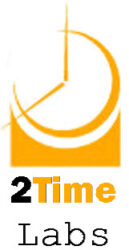 So far in this series, I have addressed the idea that Outlook could be improved by re-building it around the fundamental practices of time management. The fundamental, Emptying, is the most important one for many users, and it also could be improved in Outlook if it were redesigned.
So far in this series, I have addressed the idea that Outlook could be improved by re-building it around the fundamental practices of time management. The fundamental, Emptying, is the most important one for many users, and it also could be improved in Outlook if it were redesigned.
In this particular fundamental, a user goes through each of their capture points and moves each item to a different place in their time management system. The word “Emptying” is used because that is it’s goal — to leave behind an empty space in each Capture Point that allows it to accept new items.
There are several ways that Outlook could facilitate this practice as it pertains to email.
One is to prevent the user from reading an email and leaving it in the Inbox. Outlook could force an opened email to be placed elsewhere, and offer the user a software-assisted means way to Empty with ease.
Also, while Emptying is occurring, the user could be given the option of turning off the receipt of new email, in order to focus the activity.
Another would be to prompt the user to check other Capture Points once the Inbox has been emptied. These could include the voicemail inbox, a paper pad and incoming paper mail that all represent new time demands.
As Emptying is being done, Outlook could make it easy to decide what to do with a piece of email by presenting a standard set of options that correspond to the choices that they have when they Empty, according to the 2Time approach. When an email is read, the program could ask the user how to dispose of it, giving a list of options such as the following:
1. Delete It?
2. Store It?
3. Take 5 Minutes to Act On It Now?
4. Schedule It in Calendar?
5. Add It to a List?
These are all actions that are possible to accomplish in Outlook, but they are all hidden way in the program’s functions rather than given a prominence that underlies the fact that these are the ONLY options a user can exercise at that moment of decision.
Microsoft designers might argue that they don’t want to constrain users. Perhaps, what they fail to realize is that the current design actually already prompts the user to do what most do, most of the time — which is to leave their email in the Inbox. While this may seem like an innocuous option when it comes to managing email, from a time management perspective it’s the start of real trouble.
When Emptying is not done effectively (i.e. frequently and completely) the eventual result is an overflowing Inbox — the greatest complaint that email users have world-wide. The fact is, Outlook’s design makes it easy for this outcome to occur — call it an unintended by-product of its design. It contributes to a user’s feeling of overwhelm that hits them when they open their Inbox and have the thought that “something isn’t right” when they see the number of items they have sitting in various states.
In the future, it would be powerful if Outlook could become the single location for all Capture Points, but the technology isn’t advanced enough for that to occur. It would mean routing voicemails, faxes, incoming mail, email plus all the items written in a paper pad to one grand Capture Point in the program. At the moment, that’s not easy to do.
Until then, one of the major changes that Outlook could make is to facilitate the user’s process, or workflow.At the moment, Outlook offers no interface that acknowledges that most users follow a set pattern of activity each day. It also fails to help users to create patterns for themselves that optimizes their flow of activities.
At the moment, the way that Outlook is designed is that it “prompts” users to use it as an email-retriever. When users open Outlook, they are directed towards their Inboxes. Regardless of the number of items they contains, read or unread, the system leads them to download more email.
As users sit, their system pulls down every piece of new email, regardless of whether they have 1 minute, or 100 available at that moment to deal with them all. It’s no surprise that many feel a growing sense of overwhelm. Outlook’s design as an email management program inadvertently produces problems in the area of time management, and this is especially true when the goal of a time management system is to maximize peace of mind.
If Outlook’s interface were re-designed as a process, or wizard, it might take a user through a series of screens, with each on representing a phase.
If I had the freedom to design a series of screens to represent my regular start-up activity, it might look like the following:
Screen 1 — Clean up from yesterdayTake out items from yesterday that have not been processed. Some might be in my inbox, or sitting in my calendar. I’d be discouraged from moving to the next screen until I’m done with the first.
Screen 2 — Download emailBefore downloading, the system would tell me how many unread emails I have. I’d tell it how many to download, in order to balance the time I have available with the number of emails I choose to work through.
Screen 3 — Process Email to EmptyOn this screen, I’d be prompted to dispose of each item in the way I described above. At the end of my processing, the Inbox would be empty once again, apart from those I have not yet read or clicked on.
- Screen for Tossing — this might just be a prompt to make sure I want to delete the item
- Screen for Storing — this would offer me a set of folders in which to place the item
- Screen for Acting Now — this would just be a timer that pings at the appropriate time interval
- Screen for Scheduling — the calendar would be immediately offered
- Screen for Listing — a screen showing the user’s lists would be offered as a starting point
These choices would be ideal, and would allow me to balance incoming email with the time I have available to process.The result might be a greater peace of mind, and all it would take is a reshaping of the Outlook interface. Of course, this new design could be applied to any time management software, and I strongly believe that the first software company to build proper time management software could produce an iPod-like winner.
[email_link]






